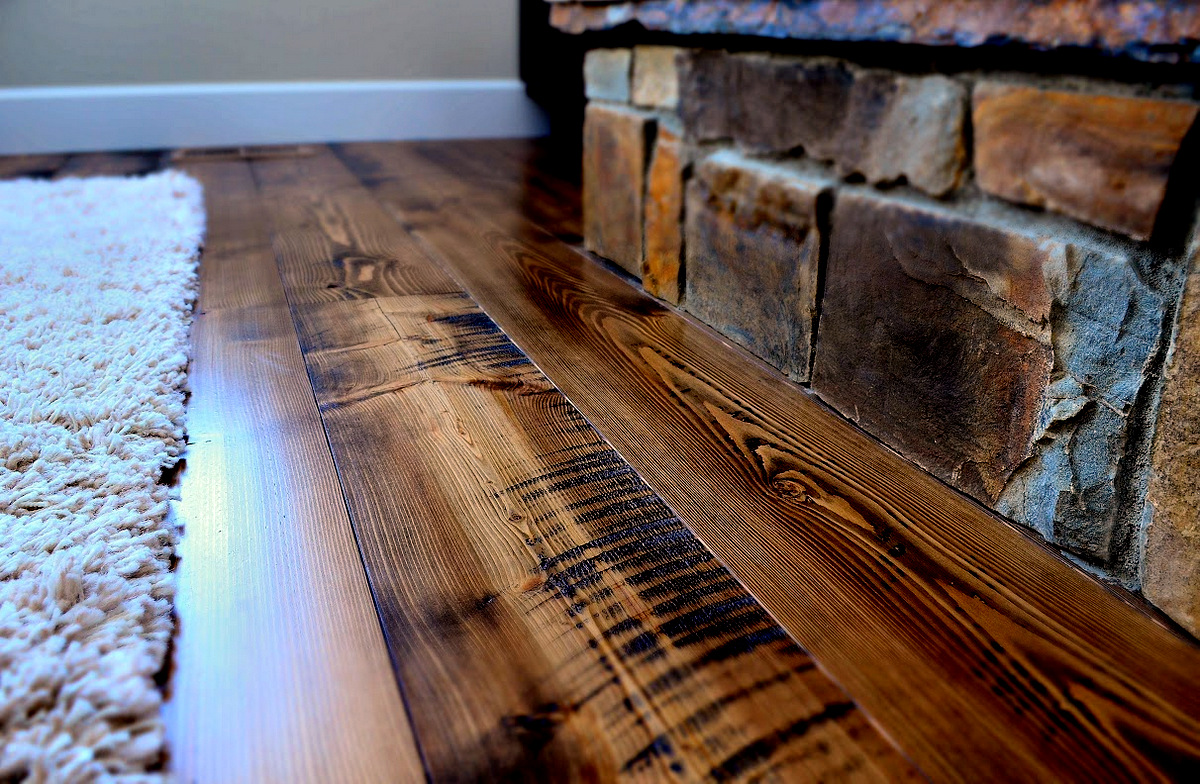Douglas Fir: The Softer Hardwood Flooring Option
Posted: January 29, 2018Source: Floor Coverings International
 Douglas Fir is an exceptional and undervalued wood flooring species. Much maligned for its low score on the Janka hardness test, Douglas Fir makes up for this with many other positive qualities. Our hand-scraped Douglas Fir wood floors are an excellent option for reclaimed wood flooring, which will add style and resale value to your home.
Douglas Fir is an exceptional and undervalued wood flooring species. Much maligned for its low score on the Janka hardness test, Douglas Fir makes up for this with many other positive qualities. Our hand-scraped Douglas Fir wood floors are an excellent option for reclaimed wood flooring, which will add style and resale value to your home.
Angiosperm vs. Gymnosperm Trees
One of the big misunderstandings about wood floors is the difference between “hardwoods” and “softwoods.” While hardwoods in the aggregate tend to have higher Janka hardness scores than softwoods, that doesn’t mean that every hardwood is harder than every softwood. In fact, hardwood and softwood are only nicknames for a more scientific separation of species. Hardwoods are actually angiosperms, which means “enclosed seed.” Angiosperm trees have mature seeds that grow in a fruit or a nut, like oak and cherry. Gymnosperm trees have naked seeds that are carried in things like pinecones. Species such as pines, firs, and cedars are gymnosperms. While it might be called a softwood, Douglas Fir is actually harder than some angiosperm hardwoods, such as chestnut.
The Durability of Douglas Fir Hardwood Flooring – Janka Hardness
Montana-grown Douglas Fir is a very durable hardwood flooring option. We need only look at the early twentieth-century houses of the Pacific Northwest, many of which have Douglas Fir floors that have retained their quality for nearly 100 years, in order to see this. The reason that Douglas Fir is sometimes mistaken as a less durable flooring material is that it has a relatively low Janka score. The Janka hardness test is the measurement by which a hardwood species’ “hardness” is determined. The score is based on how much force it takes to embed a .444-inch steel ball halfway into a plank of wood. Douglas Fir has a Janka score of 660, meaning it takes 660 pounds of force to do this. Clearly, unless you’re shooting at your floor regularly, this is an adequate level of hardness. Douglas Fir makes up for its comparatively low Janka rating in other ways though. It has an excellent modulus of elasticity, meaning it can bend and return to its original shape, unlike many brittle hardwoods, as well as good ratings for tension parallel-to-grain, shear, and compression.
Maintaining Douglas Fir Hardwood Floors
As with any hardwood flooring species, Douglas Fir is prone to scratches and scrapes. This is especially true because it is a slightly softer species of wood. One of the most common ways that hardwood floors get scratched is when grit, grime, dust, and dirt build-up and act as an abrasive force against the surface of the floor, like sandpaper. To prevent this from happening only minimal regular cleaning is required. Sweeping regularly and occasionally vacuuming should prevent this problem, and periodic damp mopping wouldn’t hurt. Be mindful of things like pet claws and stiletto heels, which have a habit of causing dents and dings, and never drag furniture across your Douglas Fir floors, always lift it.
If you’re in the market for hardwood floors, it’s time to take a closer look at Douglas Fir Flooring.
For more information or to submit an inquiry, please contact us [email protected] or call us at 406-642-7120
